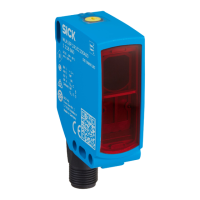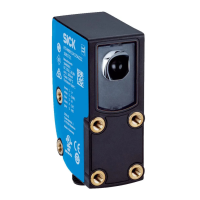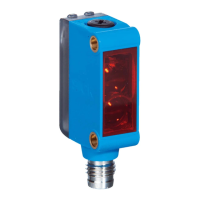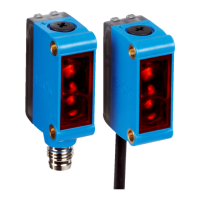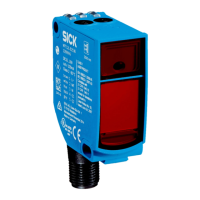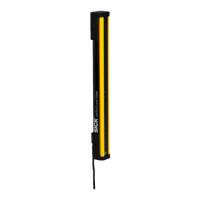OPERATING INSTRUCTIONS| Bulkscan LMS5118014829/ZNC5/2017-06-06| SICK
Subject to change without notice
53
COMMISSIONING
8 Commissioning
Overview of the steps for commissioning:
1. Teaching-in the reference contour
(see "8.1 Teaching-in the reference contour“ on page 53).
2. Congurationofmeasurementparameters
a. Set the belt speed (see "4.1 Setting the belt speed“ on page 16).
b.Setthemeasurementofthemassowrateorbulkdensity
(see"4.5Measurementofthemassowrate“onpage18).or(see"4.6Mea-
surement of the bulk density“ on page 19).
c. Set the measurement of the bulk height (see 4.7 on page 20)
3. Congurationofinputsandoutputs
a. Digital inputs (see "4.12 Digital inputs“ on page 24).
b. Digital outputs (see "4.13 Digital outputs“ on page 25).
c. Analog module BAM100 (see "4.14 Analog module BAM100“ on page 26).
4. Carryoutatestmeasurementtoconguresystemparameters
(see "8.2 Performing a test measurement“ on page 57).
a. Setting tolerances (see "8.3 Setting tolerances“ on page 57).
b. Set the Contamination measurement
(see "8.4 Monitoring of the contamination degree“ on page 60).
c. Set the Scan frequency (see "8.5 Scan frequency“ on page 61).
5. Undertake a reference measurement (compensation function) (see "8.6 Taking
a reference measurement (compensation function)“ on page 61).
Saving the conguration in the non-volatile memory
Following successful commissioning, you should save the parameters in the non-vola-
tile memory:
Select Bulkscan LMS511, Parameters, Save permanent,tosavethecongurationin
non-volatile memory in the sensor.
Select File, Save device le,tosavethecongurationoutsidethesensor,e.g.,to
have a backup in case of sensor replacement.
8.1 Teaching-in the reference contour
Thereferencecontouristheeldofviewofthesensorwhentheconveyorbeltisempty.
It is the basis for the calculation of the measured values. Use the scan view in SOPAS to
check the reference contour as an online graphic.
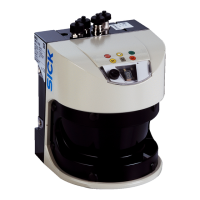
